Vanuatu's luxurious not-for-profit Ratua Private Island is just the place to get away from the world and lose yourself completely.
As the speedboat hurtles across the inky black waters, phosphorescence flicking out beside us like bits of shimmering stardust, my husband Pete grabs my hand. I can't see his face, but his gesture tells me he's thinking exactly what I am: that we've made the right decision to come here to Vanuatu, that whipping through the black night towards a secluded island will help us recalibrate and come back to each other after a particularly trying year.
We reach the end of our 30-minute catapult across the ocean from Espiritu Santo, the largest of Vanuatu's 83 islands, and pull up at the wooden jetty of Ratua Private Island. We're greeted by the manager, a jolly Filipino named Bong. Once we've downed our welcome glass of fresh pineapple juice, Bong bundles us into the island's sole vehicle to drive us to our bungalow, one of 10 scattered across the island. "You're right at the southern end, where no one will disturb you," he says with a chuckle.
A few minutes later we're inside our 200-year-old wooden thatched-roof bungalow. It's a beautifully rustic structure, which Bong tells us was transported by the French billionaire owner of Ratua from Java six years ago when he transformed the island from coconut plantation to not-for-profit eco resort. The more guests Ratua welcomes, Bong says, the more money their Ratua Foundation can give back to neighbouring islands for health and education. "Last year occupancy was really good, which meant we could build a library in a nearby school, and set up an online schooling project with 14 computers and high-speed internet," Bong says as he shows us around our bungalow. It includes a bedroom with vaulted ceilings and a canopied bed, that's connected by a covered wooden walkway to a large bathing room. Both areas are decorated with exotic antiques, large photographs of Vanuatu tribespeople, and artfully placed locally woven bags. It's the epitome of barefoot luxury, and we're so taken with it that it's quite a while before we notice the blissful lack of TV, airconditioning, and even glass in the windows. "The luxury here is not jacuzzis, it's not heated pools, it's not those things. It's the opportunity to just relive what the island was like before, when there was just this," Bong says, gesturing to the jungle-fringed ocean as he slips out into the night.
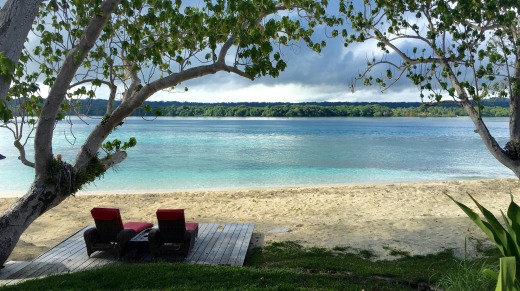
The following morning, shards of sunlight pierce the edges of the wooden shutters enclosing our room and nudge me awake at 5am. I pull myself out of our muslin-draped bed, and can't help but giggle with delight as I push open the double wooden doors. There, just 20 metres away, is the glittering ocean and our own stretch of private beach framed by two giant native trees. It's impossibly romantic. I'm still giggling as I wriggle back under the sheets beside Pete's warm body, leaving the doors open and letting the lapping waves lull me back to sleep.
Just like that, the languid pace for our first day on Ratua is set. Once we do finally rise it's a lazy ocean swim, followed by an even lazier breakfast at the "yacht club", a trio of open-sided waterfront bungalows just a seven-minute stroll away. By 10.30am we're back at our abode, and I've made the decision that clothes are no longer necessary. Because really, how many times in life do you have your own private beach to frolic on? All day long – as we soak up the sun on our wooden deck, as we paddle in the glittering ocean, as we sip champagne, and as we spend far too long watching hermit crabs scuttle across bits of sun-bleached coral – we're not visited by a soul. Which just might be the greatest luxury of all.
Tourism in Vanuatu, which makes up about 40 per cent of the country's GDP, was severely affected by last year's Cyclone Pam. This was a large part of the reason why we chose to bring our tourism dollar here, to help in some small way get the country back on its feet. But we hadn't considered that this would also mean we'd have some things all to ourselves. Aside from a family of three, we're the only other guests staying on the 60-hectare island. And when we take a boat over to neighbouring Malo island, where we kayak through verdant mangrove-flanked tunnels to a deep natural spring called a "blue hole", we don't see a single other traveller. There, we swim in milky dark blue water surrounded by Avatar-like cliffs cloaked in green vines, and climb wild trees with our guide Robin, who tells us tales of his boyhood on Tanna island. "My tribe's job was to catch fish and farm taro, which we'd trade with neighbouring islands for the goods we needed," he says as we sit tucked in the boughs of a huge native tree. "And when I'd go to school and forget my lunch, I'd just climb a coconut tree and pick one of the nuts to eat!" Snapshots of a peaceful, simple life, with plenty of space to think and to breathe. The kind of life you begin to crave for yourself after just a few days on Ratua.
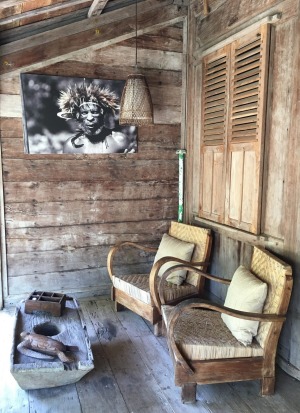
The highlight of our stay comes late the following morning. More than 20 horses are kept on Ratua's ranch, where we meet a rotund and cheery wrangler named Johnny and our trusty steeds. Within minutes Johnny has us on their backs, sans saddles, and walking through the palm groves as the rain starts to patter down. It's not until we reach the shore that I realise I have absolutely no idea how to do what we're expected to do next, and start to quietly panic as our horses slosh through the shallows. "When the horses start to swim, lean forward and grab their manes!", yells Johnny over his shoulder, just in time for us to feel our horse's powerful muscles start pumping away beneath us. The experience lasts for only about three minutes, but they're three of the best minutes of our lives.
The rest of the afternoon oozes away in a delicious blur. We snorkel around the fringe of the island, over shallow reefs full of vibrant coral blooms, magnetic blue starfish the size of a human head, patterned sea snakes twisting through the coral and schools of small colourful fish flitting between it all. We eat a barbecue lunch on the beach, take a massage in Ratua's overwater treatment room, and swim and laze in the sun until we've had enough slothery and are ready to go for a hoon around the island on a couple of their pushbikes. We pedal along dirt tracks, past towering coconut palms, lush frangipani trees and big shaggy sheep with curled horns, and end up on the island's private runway (the owner lands his private jet here when he visits, of course). There we find the horses grazing contentedly in the twilight. They approach and nudge us with their big wet noses, licking the salt off our bodies as the huge tangerine sun drops below the horizon. That evening, after a dinner of pasta marinara and chilled French rose, we take a night swim under the moonless sky. As we paddle out we find the ocean is once again speckled with phosphorescence. We cuddle each other and the water stirring around our bodies lights up with liquid sparks.
On our final morning we wake at sunrise, and grab two of the island's paddleboards to check out a Japanese shipwreck that pokes out of the water off the northern end of the island. On the way back we see two giant turtles soaring through the crystal-clear water beneath us like huge birds, their bald heads breaking the surface every now and then to snuffle a lungful of air. It's completely disarming, and leaves both of us a little teary. As does our departure from the island an hour later, when Ratua's staff all gather on the jetty to sing us a lilting farewell song.
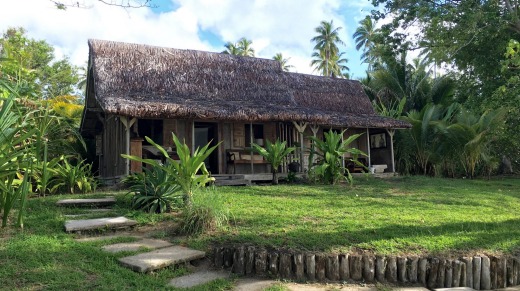
Pentecost Island's famous naghol, or land diving, is something that needs to be seen to be believed. Village men and boys make remarkable leaps of courage (or insanity) from rickety wooden towers with nothing but vines tied to their ankles, as a gift to the gods to ensure a bountiful yam harvest. These ceremonies, said to be the inspiration for bungee jumping, take place only during Vanuatu's yam harvest, through April and May.
Accessible by boat from Pentecost and Ambae islands, this "Island of Water" is dotted with rivers, thundering waterfalls, hot springs, deep pools and water taro terraces. Big Water waterfall, in the north, is locally considered as the Eighth Wonder of the World.
Perched on the island of Tanna, in Vanuatu's Tafea province, is Mount Yasur, one of the world's most accessible active volcanoes where brave souls can walk right to the rim and peer down into its fiery belly. Mount Yasur has been dubbed the "lighthouse of the Pacific", due to its almost constant activity since it attracted James Cook on the first European journey to the island in 1774.
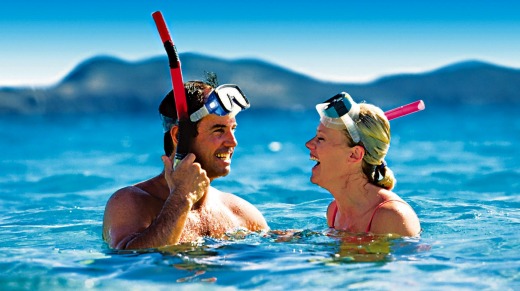
Setting off from Luganville, this adventure involves a jungle trek that takes you across creeks, along bamboo ridges and past waterfalls, an adventure into an enormous cave, and a swim down river rapids. Not for the faint of heart.
Just off the coast of Espiritu Santo is coral-encrusted Million Dollar Point, where hundreds of tonnes of US military equipment were dumped at the end of the Second World War. Visitors can snorkel or dive among dumped jeeps, bulldozers, trucks, tractors and more.
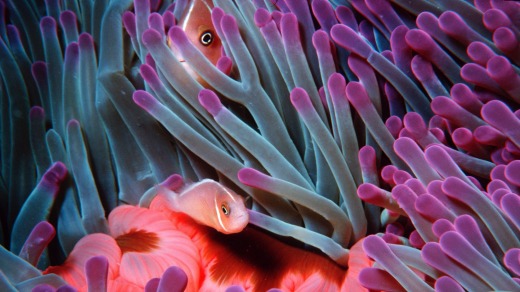
Vanuatutravel.info
Air Vanuatu flies to Espiritu Santo via Port Vila for about $750 low-season return from Sydney, Melbourne and Brisbane. It's also possible to fly to Brisbane from Sydney and Melbourne, then fly direct to Espiritu Santo. See airvanuatu.com.
Villas start from $465 a night, including transfers, taxes and breakfast. See ratua.com/en.